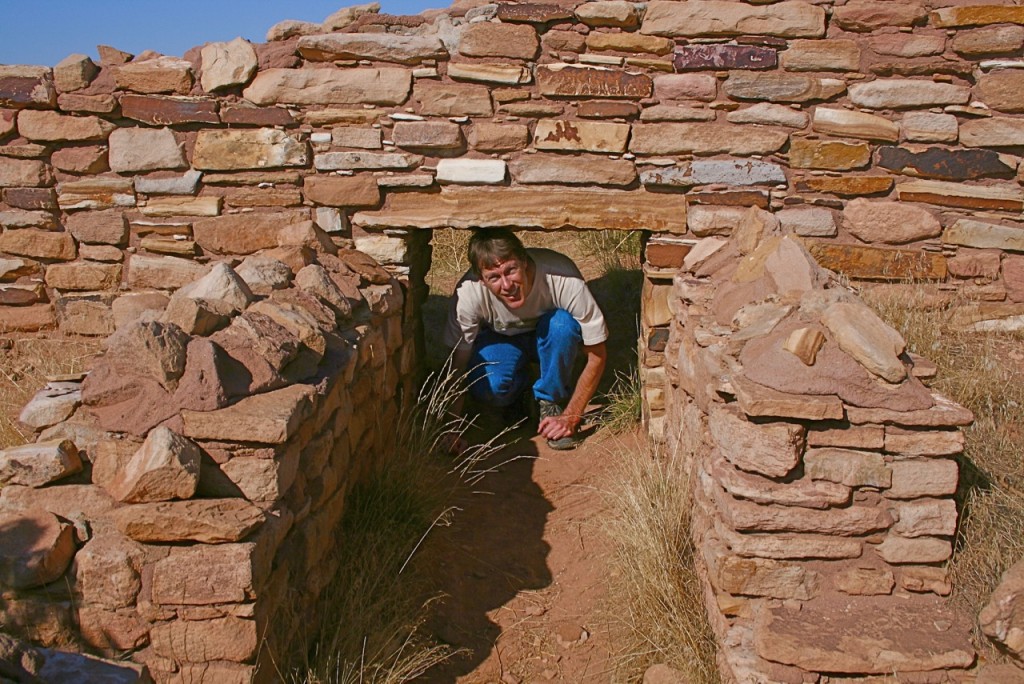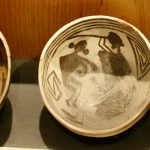Along Colorado Highway 491, pinto and Anasazi bean fields line the road—as do spectacular sunflowers. (Dried Anasazi beans, sold as local souvenirs, are an heirloom variety grown from seeds found in ancient pottery.)
At the hamlet of Pleasant View, Ken and I followed Road CC nine miles (on asphalt and gravel) to Lowry Pueblo, just one of Canyons of the Ancients’ multitude of archaeological sites, most of which are unexplored.
This settlement was home to about 40 people in the late 1100s, and the stabilized masonry walls mark small rooms.
Lowry has one of the region’s largest kivas—47 feet in diameter—with floor stones laid in a decorative pattern. The signs tell about the various interpretations of the patterns, which supposedly tell a story.
There’s no gas or food in Canyons of the Ancients National Monument, so pack food and lots of water. And be sure to have a hat, sunglasses, long-sleeved shirt and pants, and plenty of sunscreen to shield you from the intense sun. Sturdy footwear and good socks will protect you from rocks and cactus.
What’s There: Lowry Pueblo is a small site with reconstructed ruins to explore. There are interpretive signs, brochures, a picnic table and pit toilets—but no water.
About Canyons of the Ancients National Monument
Declared a National Monument in 2000, Canyons of the Ancients contains some of the most scenic and archaeologically important land in the American Southwest. This unique, federally protected area—176,056 acres—contains the highest known density of archaeological sites in the United States. More than 6,000 ancient sites including cliff dwellings, kivas, and rock art have been identified.
For more information on the region, visit Mesa Verde Country visitor information bureau.
—Laurel Kallenbach, freelance writer and editor
(Originally published on October 18, 2008)
Read more about my travels in America’s national parks and monuments:
- Sea Kayaking in California’s Channel Islands
- Snowshoeing in Rocky Mountain National Park
- Fossils Come Alive at Dinosaur National Monument
- 10 Reasons to Celebrate America’s National Parks
- Castles in the Utah Desert: Hovenweep National Monument
- Solar Power Lights Ft. McHenry Historic Monument
- Mesa Verde: An Archaeological Pilgrimage
- Sleep in a Sustainable Hotel in Mesa Verde National Park
- Treasures of Canyons of the Ancients National Monument
- Discover Painted Hand Pueblo in Canyons of the Ancients


